Gardening and tech don’t always go hand-in-hand, but these solutions help make it more fun and less work
I love gardening. I’ve been doing it since I was a kid, and it’s something I look forward to every spring. But I’ve got a full-time job. My wife is a full-time teacher. We’ve got one kid and are fiercely protective of our family time, despite all the extracurricular activities that come with having an 11-year-old boy. Plus, we’ve got a house, pets, and a seemingly endless supply of things to fix and people to visit.
All of that means there’s relatively little time for gardening, even though we love it. Thankfully, I’ve got a little weed-eating robot named Tertill to help me with the arduous task of weeding, and a clever AI-powered app called Seedtime that helps me plan everything I want to do this season.
Android Central Labs

Android Central Labs is a weekly column devoted to deep dives, experiments, and a focused look into the tech you use. It covers phones, tablets, and everything in between.
I’ve been using Tertill for years, and this marks the first season since its inception that the product is officially sold out for the foreseeable future. The little $150 robot roams around your garden plot like an old Roomba, covering as much ground as it can in short bursts of time.
The robot runs off a solar-powered rechargeable battery and has cambered wheels so it’s stabilized even when the ground isn’t perfectly flat. Sensors keep it from running over tall plants, while another sensor on the underside senses small weeds and uses the built-in weed wacker to remove them from your garden’s existence.
While Tertill has helped me over the years with one of the most time-consuming tasks in the garden, it wasn’t until this season that I found an app to help me with the rest of the work.
It’s early in the gardening season still — we’re not even supposed to put things in the ground here until after Mother’s Day — but this delightful combo of “robots + AI” has been a massive help in getting things started on time this year.
It’s Seedtime
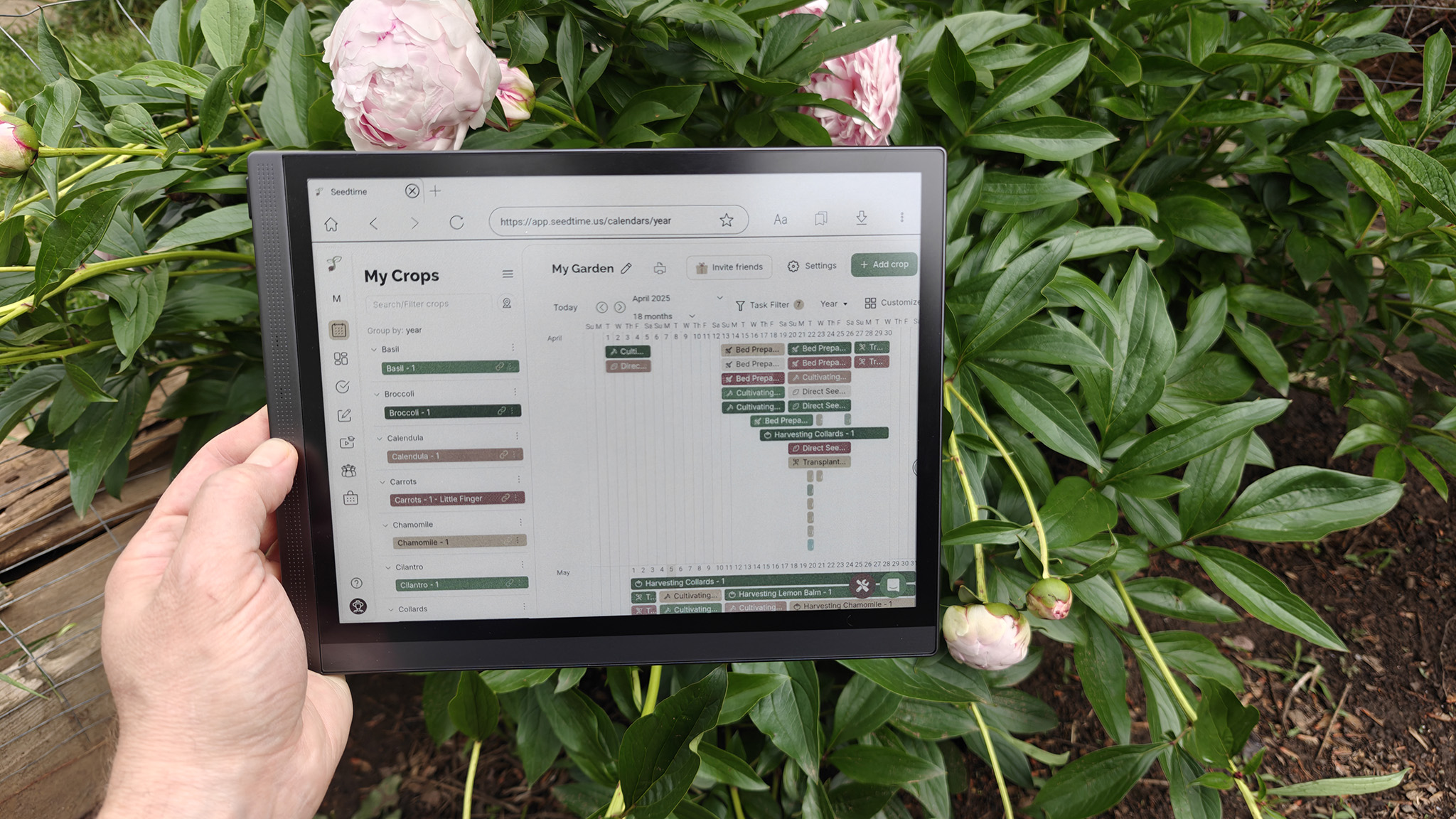
I first heard about Seedtime in March of this year, and it immediately caught my eye. It’s a garden planner app that helps you understand when the plants you want need to be sown, planted, and ultimately harvested. All the calculations are done for you! All you have to do is follow the task list that’s automatically created. I’ve got it running on a BigMe B1051C color E Ink tablet, which is perfect for using outdoors.
Seedtime has a massive database of garden plants, including all the vegetables and herbs you’re likely to plant, no matter where you live. The app is free, but I’ve been using the premium subscription as part of the testing and review process.
Anyone starting out for the first time this year can stick with the free option, as it provides plenty of functionality and doesn’t force you to pay for the basics. If you find you need some of the premium functionality, upgraded accounts start at around $4.55 per month.
You’ll begin your Seedtime journey by giving your garden a name, selecting the region you live in, and then adding in all the crops you plan to plant this year. Seedtime automatically calculates the best time to seed your crops, prepare the beds, transplant plants that need it, and even start looking for things to harvest, all added neatly to the calendar in the app.
The scheduling feature is incredibly smart and will even reschedule tasks based on when you complete them.
There’s even a tasks section that makes it easy to understand what needs to be done right now. Even if you’re late to a task — I was several weeks late planting a few crops — Seedtime will automatically catch up your tasks and recalculate when the next action needs to happen based on when you check tasks off your list.
This part of the app blew me away, as it completely cut out the guesswork often associated with when you need to plant/transplant/harvest, even if the back of the seed package gives you rough estimates. If nothing, it completely solves the daunting task of writing down everything you want to plant and trying to calculate when you need to do things.
Initially, I felt adding drops was overwhelming because there are so many sections you can fill in, but can is the operative word. Everything you need is filled in by default, so long as the app has a premade crop entry.
Of course, that means that Seedtime doesn’t have entries for everything you might want to plant. While it has a million different types of tomatoes, herbs, carrots, and most other staples, you won’t find entries for fruit trees or bushes just yet, although those may be added in the future.
You can manually add these things, and the basic seeding/transplant/harvest/etc sections will still automatically calculate things out for you, but it’s a bit more manual work than crops that already have entries.
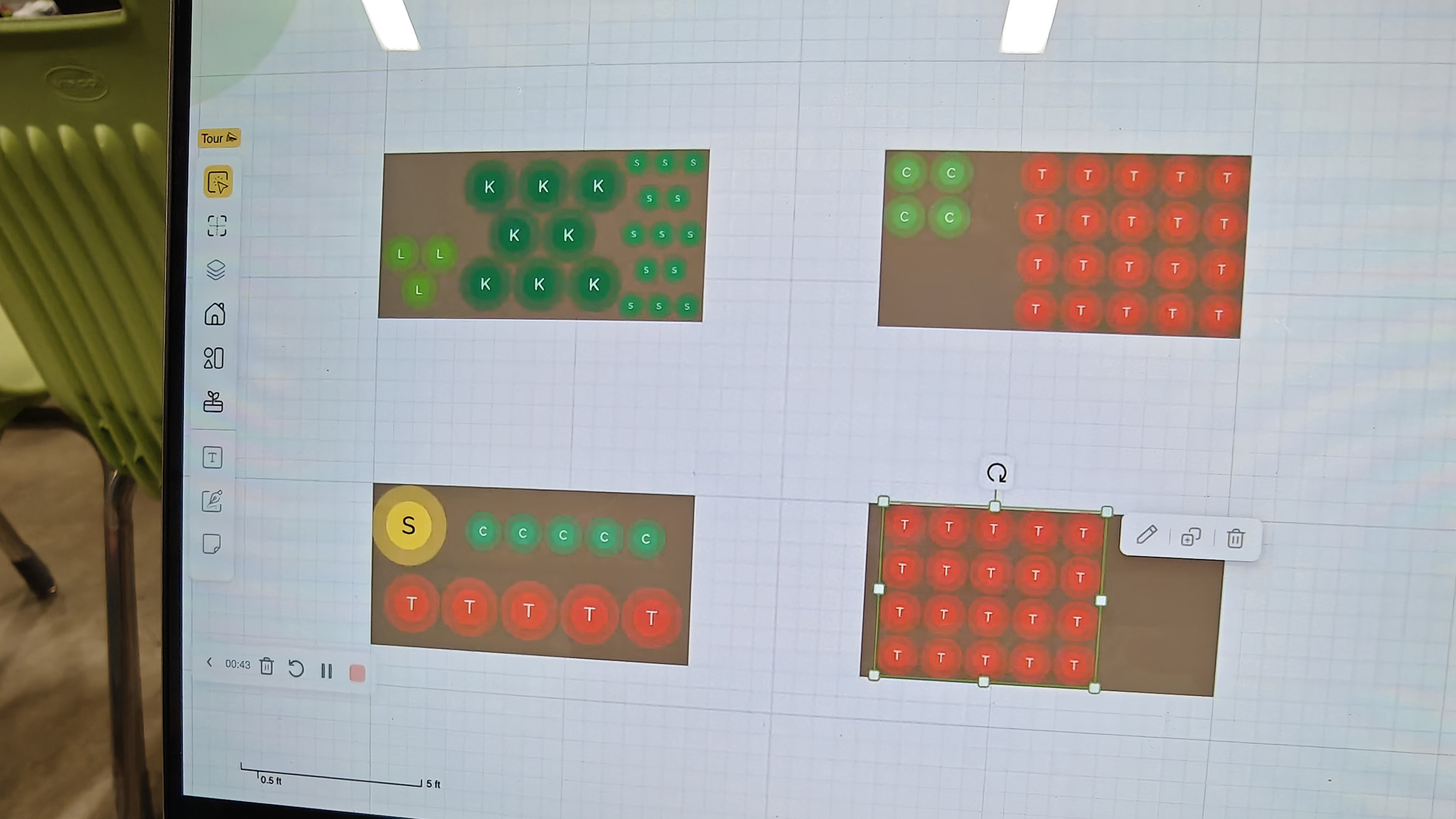
Once you’ve got a list of crops selected, you can take those into the layout section of the app and create a full visual garden layout. This part of the experience only works on a web browser for now, although I had no issue opening it up in Chrome on an Android tablet. If the calendar portion of the app impressed you, the layout section is going to blow you away.
While Seedtime is working on more automated ways of creating layouts in the future, the process is still manual at this time. You’ll drag out squares, rectangles, circles, or a number of other shapes and give them a name.
After your beds are in the layout, you can drag out each crop and position it where it belongs. It’ll even show you the proper spacing, letting you iron out all the nitty-gritty details with very little effort.
This doesn’t just give you a pretty garden layout, though; it also gives you a visual layout of all your calendar entries. A quick glance at the layout portion of the app will let you know what you need to do and where to do it, just in case you forgot where you planted those radishes. The combination of colored calendar entries and visual locations of garden plots is a game changer, and it’s going to make the rest of my gardening season a breeze.
AI you’ll actually want to use
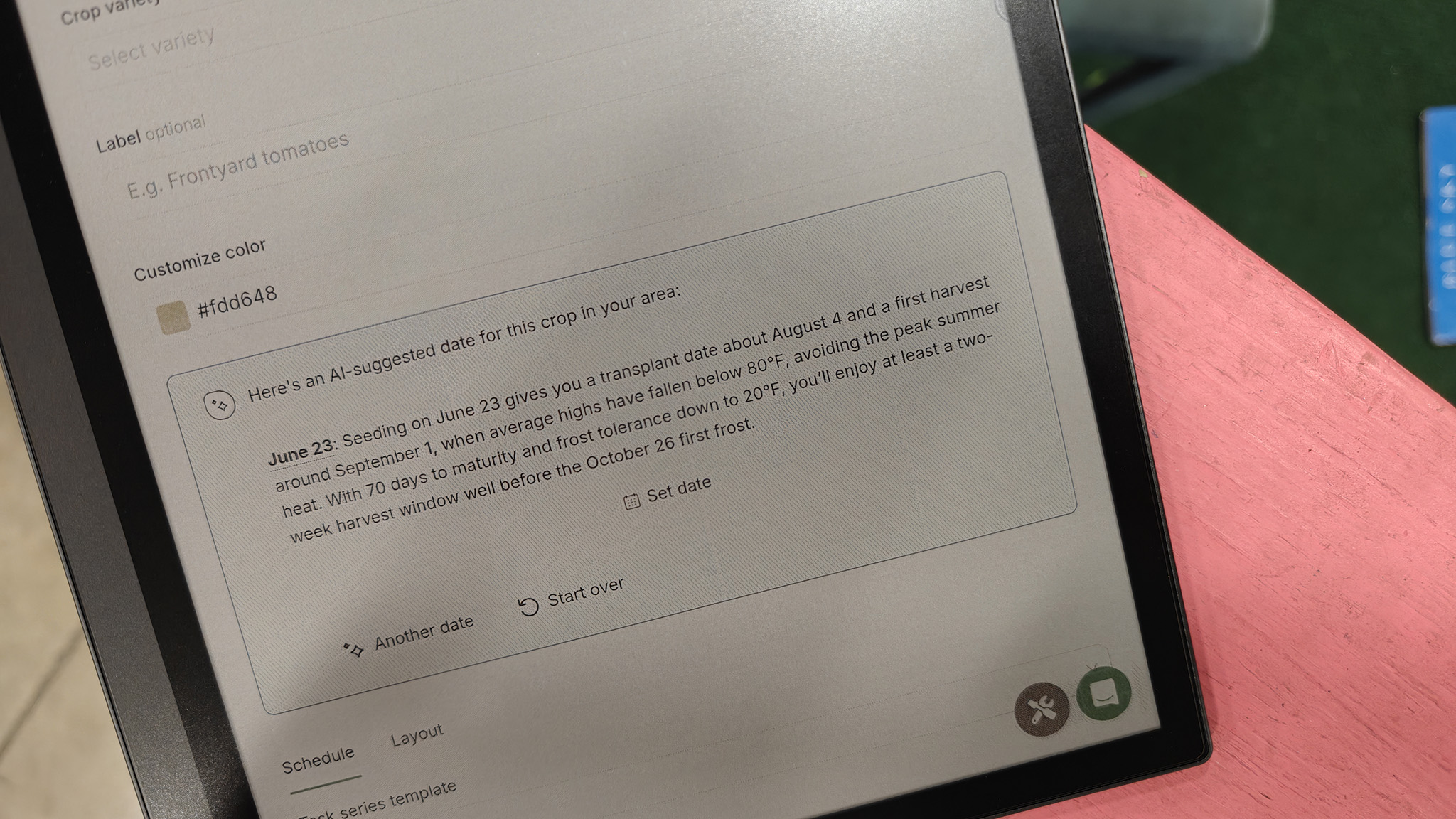
The most recent update of Seedtime added an AI-powered companion planting section, giving you five immediate ideas of what to plant near all your favorite crops. This includes staples like marigolds, which can help ward off nematodes, and other companion plants like dill, which can be paired with cucumbers to enhance their flavor. Seeing these companion plants right on each crop’s tile is one of the most genius ways to integrate AI that I’ve seen yet, and it doesn’t stop there.
Let’s say you’re adding a specific cultivar of broccoli that the app doesn’t have, and you don’t know when you need to plant it. On the “add crop” card, you can tap a little sparkly AI button to perform a calculation based on your crop type, cultivar, region you live in, and more. After a few seconds, the app will return a suggested date, plus make any other necessary changes to the crop’s card.
When Seedtime CEO Paul Dysinger told me about this feature during an interview, I was seriously impressed. A lot of AI-powered features on our devices are cool, but they’re not always implemented in useful ways. While AI could always make a mistake and give you the wrong date, Seedtime lets you make a decision before implementing it and gives you other suggestions based on the response, which helps introduce a level of trust in the process.
AI is built into the Seedtime app, giving you suggestions for what companion plants to plant and when to plant them based on what you want to grow and where you live.
For now, AI functions are unlimited since this is a brand-new feature, but the company will implement a token system once the process has been finalized. Free users will get a few tokens to use for basic tasks, while paid users will have much wider use with the concept and more tokens included every month.
The new companion crop planting feature just launched last Tuesday, so a lot of this new AI-driven content is very fresh and shows that the company is adding features that are actually helpful, not just fluff.
When I asked Dysinger about the potential of adding crop rotation schedules and a few other features like it, he said they weren’t out of the question and have been requested in the past. As far as features go, this was the only big one I could think of that would be extremely helpful for many gardeners when planning next year’s garden.
I’m excited to see how Seedtime affects my gardening this year and if I end up being more productive because of it. My biggest problem every year is that I often get overwhelmed with the number of things that need to be done and often miss important dates because of it. Seedtime should fix that entirely, and hopefully it helps you out a lot, too!
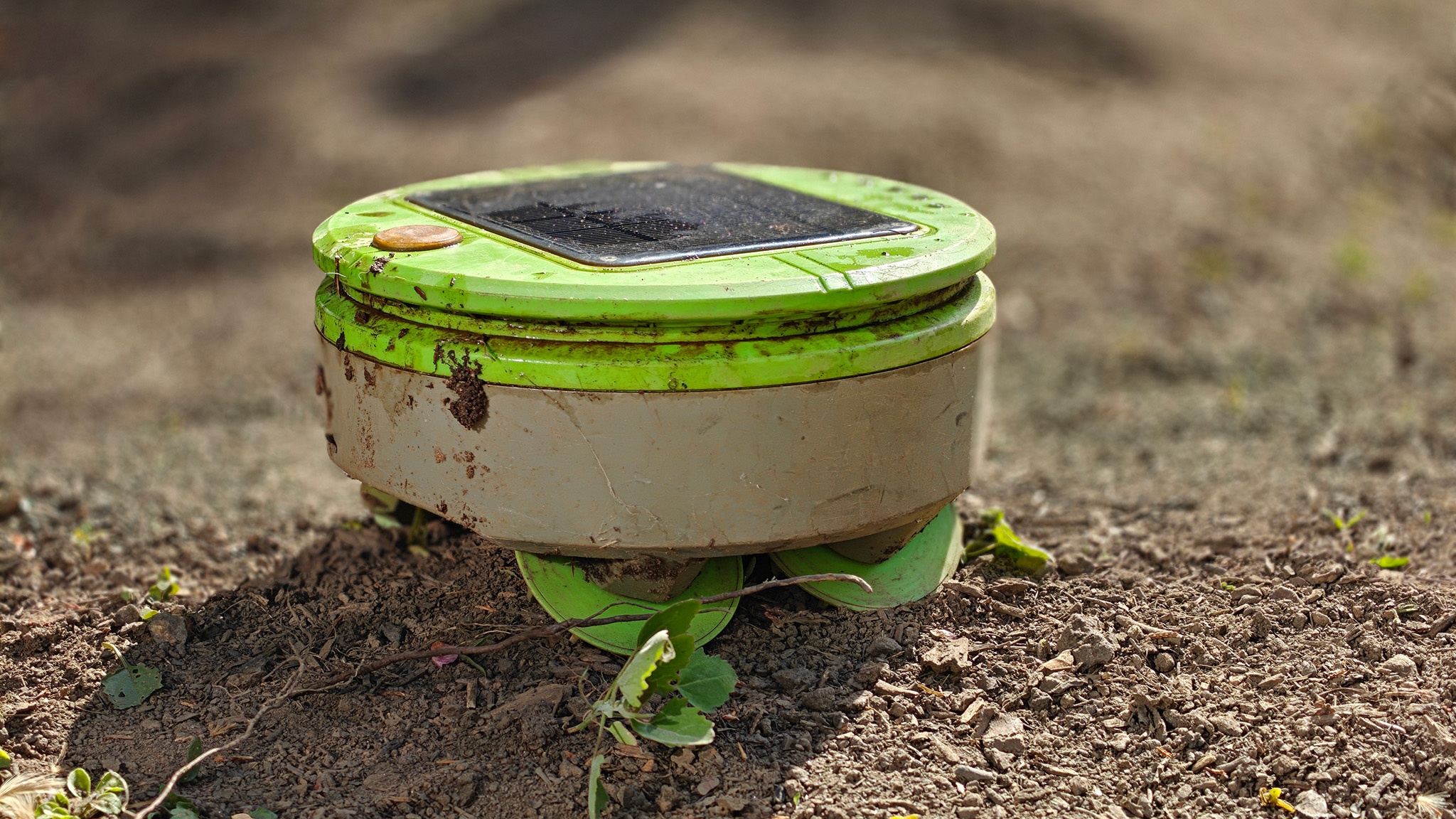
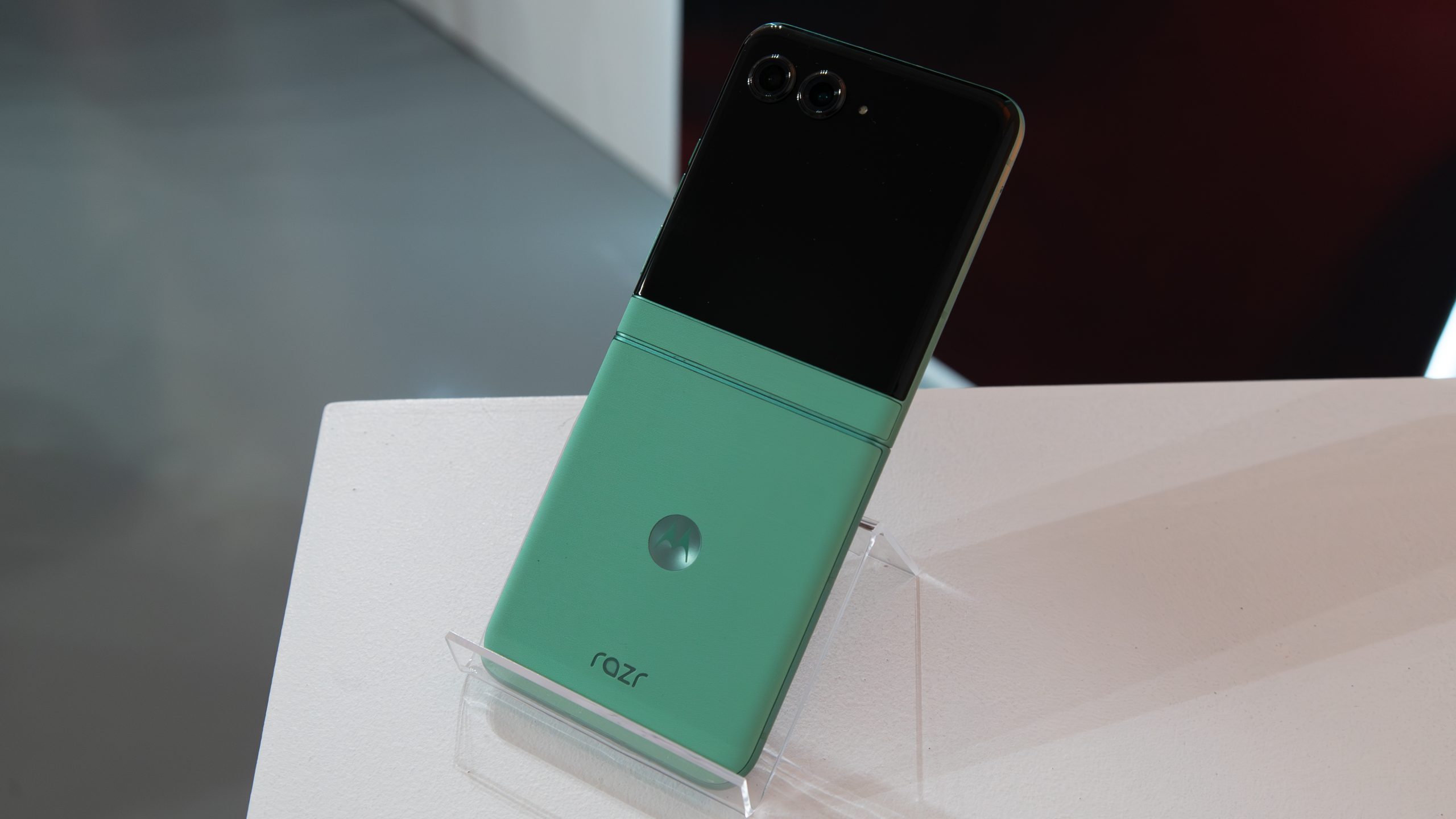
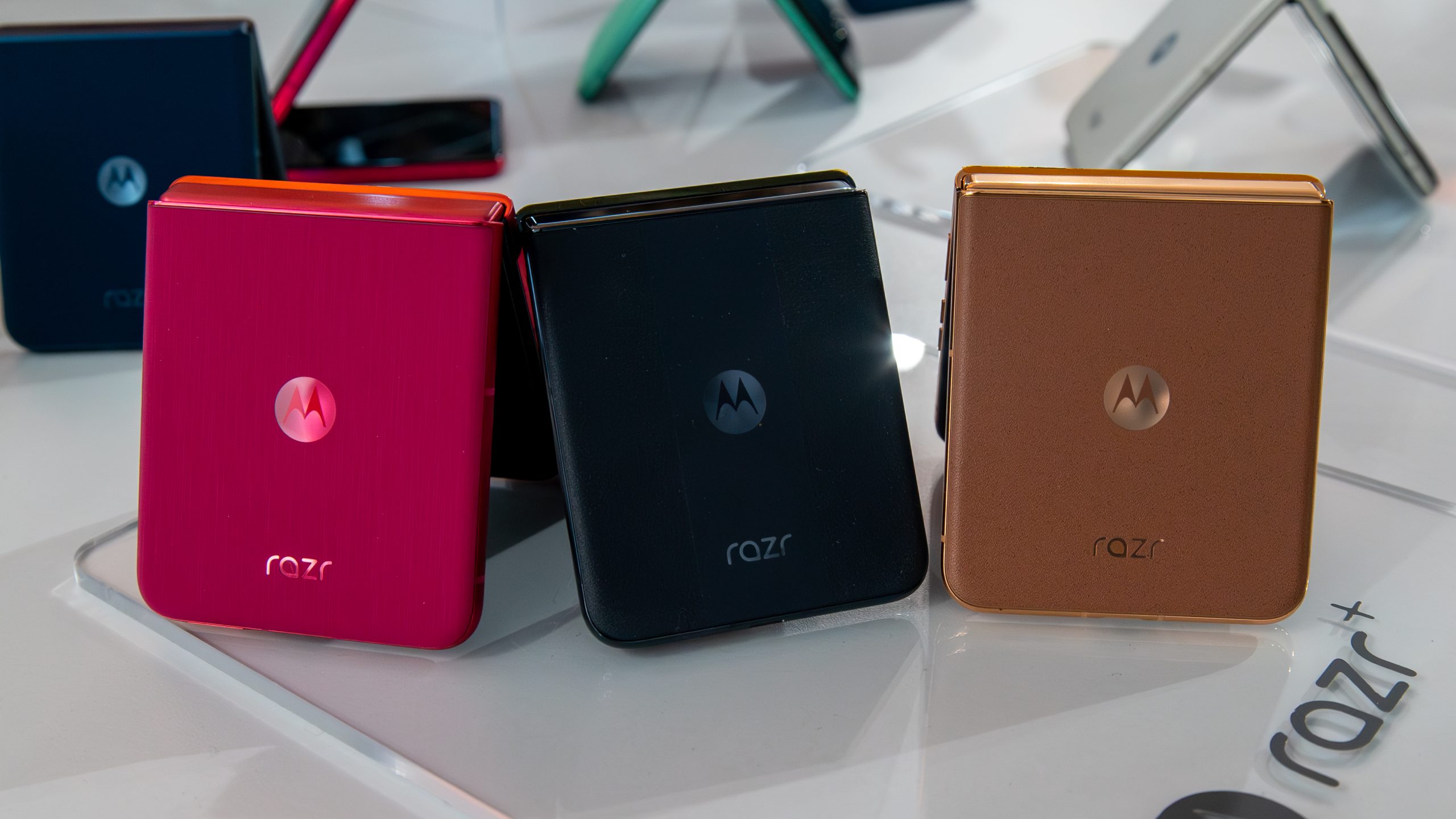





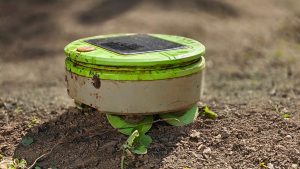





Post Comment